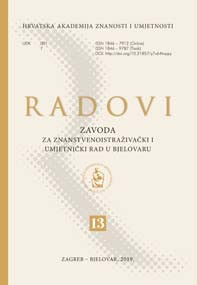Povijesno-komparativna i hermeneutička analiza djela Célestina Freineta i Mate Lovraka
Historical, Comparative and Hermeneutical Analysis of Works by Célestin Freinet and Mate Lovrak
Author(s): Milan MatijevićSubject(s): Education, Recent History (1900 till today), Comparative Study of Literature, Croatian Literature, French Literature, Hermeneutics
Published by: Hrvatska akademija znanosti i umjetnosti - Zavod za znanstvenoistraživački i umjetnički rad u Bjelovaru
Keywords: children’s literature; children’s rights; constructivist teaching; pedagogy; reform pupils’ autonomy;
Summary/Abstract: Célestin Freinet and Mato Lovrak were active as teachers more or less contemporarily in the 20th century. It may be stated that they lived and worked at the same time – between 1919 and 1960. Their activities and ideas regarding pedagogy were to a high extent similar. The following question may be posed: who or what was the cause that both of them had many ideas in common, which they practiced in working with children. Since they both lived and worked in the time of full affirmation of the projects and courses related to reform pedagogy, it may be assumed that both of them recognised the pedagogical values of the ideas arising from these projects, and successfully and creatively applied them in practice. Freinet was better known in other countries of Europe of that time, whilst Lovrak, apart from practicing these ideas in classroom, described them in a rather interesting fashion in novels tacking school life topics intended for children and teachers. Common features in their pedagogy and didactics particularly worth stressing are: pupils’ autonomy; cooperation among pupils; children’s rights; freedom of expression in various areas; freedom in writing compositions; pupils’ cooperative movement; empirical learning in a stimulating environment. They both stressed freedom as an important principle in relation to pupils’ activities. As concerns the interrelations regarding the activities of teachers and pupils, both of these well-known teachers and pedagogues agree that the best school is the one where pupils are more active than the teachers, that is to say where learning predominates over teaching. Due to the fact that – thanks to their ideas and work – they had come closer to the phenomenon today called constructivist teaching, it may be concluded that they have both contributed to the affirmation of both constructivist teaching and constructivist didactics, which even today attract the attention of teachers and pedagogues.
Journal: Radovi Zavoda za znanstvenoistraživački i umjetnički rad u Bjelovaru
- Issue Year: 2019
- Issue No: 13
- Page Range: 165-195
- Page Count: 32
- Language: Croatian

